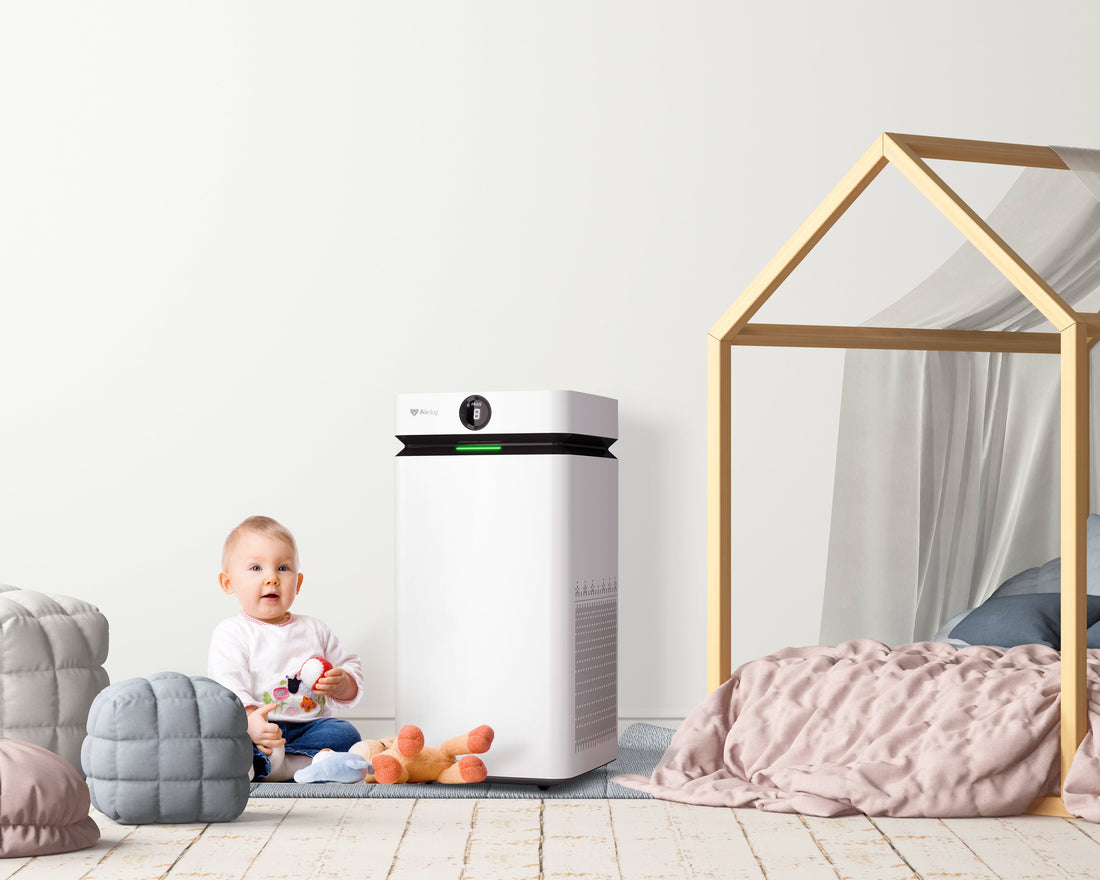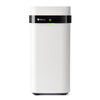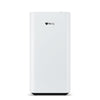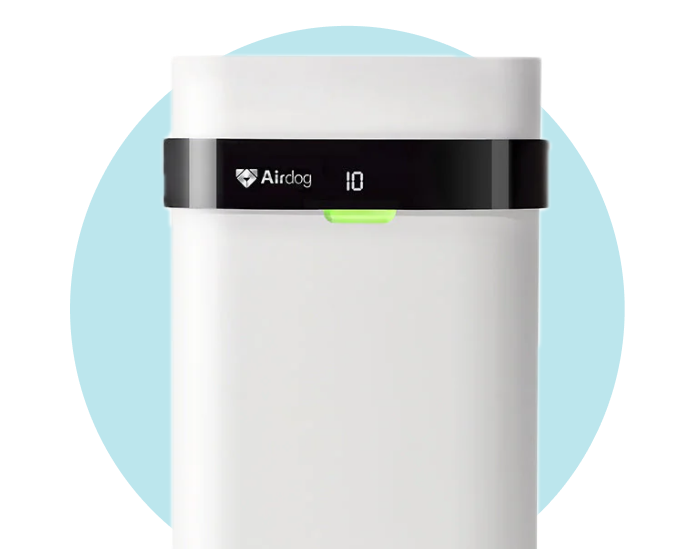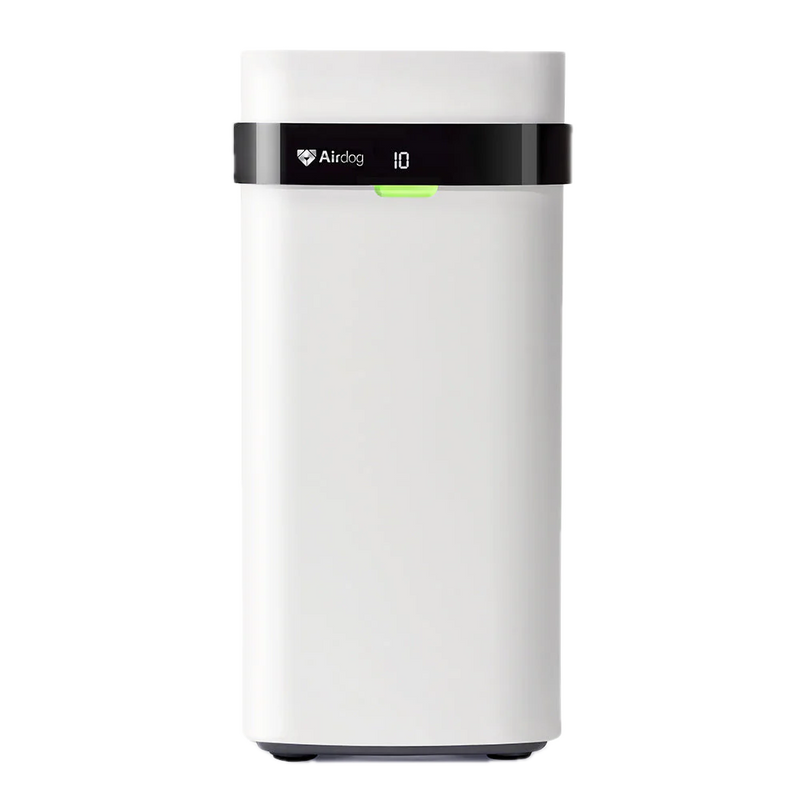Why Air Purifier Placement Matters
Your air purifier works by drawing contaminated air inside, filtering harmful particles, and releasing purified air back into your space. Strategic placement ensures the unit operates efficiently across your entire room while maintaining unobstructed circulation. Obstructions like walls, furniture, or corners limit airflow and prevent optimal performance.
Smart placement allows air to flow freely through the unit, improving circulation, distributing clean air more evenly, and enhancing overall performance. You need adequate space around your air purifier to ensure proper airflow and maximize its effectiveness. Without proper airflow, even the most advanced purifier cannot deliver optimal results.
General Guidelines for Air Purifier Placement
Follow these guidelines to set up your air purifier for maximum benefits:
-
Allow proper clearance: Maintain clear intake and outflow vents with adequate clearance (3 to 5 feet recommended). Providing enough space around your air purifier ensures proper airflow, effective cleaning, and prevents recirculation of contaminated air.
-
Avoid corners and enclosed spaces: Skip corners and enclosed spaces that restrict air circulation. Open positioning helps distribute clean air throughout your room.
-
Use a stable, flat surface: Position your air purifier on a flat surface such as a sturdy table or floor to ensure stability and reduce noise. Stable surfaces help the device operate properly while minimizing vibrations.
-
Elevate to breathing height: Elevate the purifier to breathing zone height relative to the ground. In standing areas, position around 3 to 5 feet above ground level. For bedrooms and seating areas, 2 to 3 feet above ground is generally a good height.
Room-Specific Placement Recommendations
Bedroom
Bedroom air purifiers should be placed within a few feet of your bed, but avoid being directly beside open windows, which can interfere with performance. Quiet operation matters, so position your air purifier near your bed on a flat surface to reduce vibration.
Living Room
Living rooms often need one air purifier in a central location to distribute air effectively. Position near seating areas so purified air reaches where you spend most of your time.
Kitchen
Kitchens produce gaseous pollutants and smoke particles from cooking activities. Position your air purifier near cooking areas, but avoid placing it too close to ventilation sources that push air away. For natural gas stoves, proper placement helps capture smoke particles and odors more efficiently.
Home Office
An air purifier near your desk creates a clean air bubble while you work. Improved air quality in small spaces enhances focus, productivity, and well-being throughout your workday.
Basement and Other Damp Areas
Basements often harbor mold spores, musty odors, and conditions perfect for mold growth. Position your purifier in a central location and pair it with a dehumidifier to prevent moisture buildup. This combination helps remove pollutants and prevent future mold.
Small Room Considerations
To maximize your air purifier's effectiveness in small spaces, position it centrally while ensuring adequate distance from walls or other obstructions. Choose a compact purifier designed specifically for small rooms, as these models maximize air purification and circulation in tighter quarters.
Large Room Considerations
For best results in large spaces, verify that your air purifier's capacity matches your room's size to ensure optimal performance and cleaner air throughout the space. Use a powerful air purifier with a high clean air delivery rate, or consider positioning multiple units throughout the space. Position each air purifier to complement your room's layout and natural air circulation patterns, ensuring air distributes evenly.
Placement Near Pollution Sources
Positioning air purifiers close to known pollution sources makes a significant difference in odor and particle reduction. Position them near litter boxes, pet areas where pet dander collects, or smoking zones to dramatically reduce unwanted smells. During wildfire season, place your air purifier near entry points such as doors and windows to capture wildfire smoke before it spreads throughout your entire room.
How Many Air Purifiers Do You Need?
The number of units depends on square footage, layout, and room size. In open floor plans or large homes, one larger unit or multiple air purifiers may be necessary to cover different areas effectively. For smaller, enclosed homes, one air purifier usually suffices if its capacity matches the size of the space.
Choosing the Right Air Purifier for Your Space
The right air purifier placement works hand in hand with choosing the right purifier.
-
Clean Air Delivery Rate (CADR): Higher CADR ratings mean the purifier cleans your air faster, which proves important for larger spaces.
-
Filter Type: Most air purifiers use HEPA filters to trap harmful particles, but Airdog's TPA® technology goes further by eliminating microscopic pollutants down to 0.0146 microns. HEPA filters only trap particles as small as 0.3 microns, and they require frequent replacements.
-
Features for High-Pollution Areas: In high-smog or smoke regions, choose units that handle these particles and other gaseous pollutants.
Avoiding Common Air Purifier Placement Mistakes
To maximize your air purifier's effectiveness, avoid these placement mistakes that can limit performance:
-
Too close to walls or furniture: Don't position your air purifier too close to walls, corners, or large furniture, as this blocks airflow and reduces its ability to purify air.
-
Insufficient clearance: Always provide adequate clearance (ideally 3 to 5 feet) around the device, and choose a central location for optimal placement.
-
Mismatch with room size or filter type: Consider the filter type's effectiveness and ensure your purifier's capacity matches your room size.
Air Purifier Maintenance and Best Practices
Even if you perfectly place your air purifier for peak efficiency, poor maintenance can keep you from actually improving your air quality. Remember to:
-
Regular filter care: Most air purifiers require disposable HEPA filter replacements, while Airdog's activated carbon filters are washable and reusable, making upkeep easier and eco-friendly.
-
Monitor indoor air quality: If you notice persistent odors or visible particles, adjust placement or increase usage time.
-
Keep airflow unobstructed: Make sure your air purifier operates with adequate clearance while avoiding corners or obstructions that reduce air flow.
Remove Air Pollution and Get Excellent Air Quality with Airdog
The best place to put an air purifier depends on your space, pollution sources, and daily activities. Proper placement ensures cleaner air for improved well-being. Airdog's TPA® technology provides superior air purification, capturing and eliminating harmful, polluting particles that most air purifiers miss, while offering eco-friendly, cost-effective maintenance.
Get fresh air today with an Airdog Air Purifier!
Frequently Asked Questions About Air Purifier Placement
What is the best place to put an air purifier?
The best placement for your air purifier's performance involves a central location with adequate clearance for airflow. Avoid corners and obstructions, and place your air purifier near the height you take in air to get clean, fresh air.
Should I put an air purifier near a window?
Avoid placing an air purifier directly beside open windows, since incoming air can disrupt air flow and reduce efficiency. In general, you should set up your air purifier near the center of the space instead, unless you're trying to help with smoke pollution.
Can air purifiers help with wildfire smoke?
Yes. Place your air purifier closest to entry points like windows and doors to capture smoke before it spreads. Look for a unit with high CADR and advanced filtration.
How many air purifiers do I need in my home?
The number depends on square footage and layout. Large or open floor plans may require several air purifiers, while one air purifier can suffice for smaller or enclosed rooms. Check your air purifier's capacity and see if it's rated to handle your space.
Where should I put an air purifier in the bedroom?
Place your air purifier near your bed at the height you sleep, about 2 to 3 feet above the floor. This helps improve sleep quality by delivering purified air directly where you rest.

